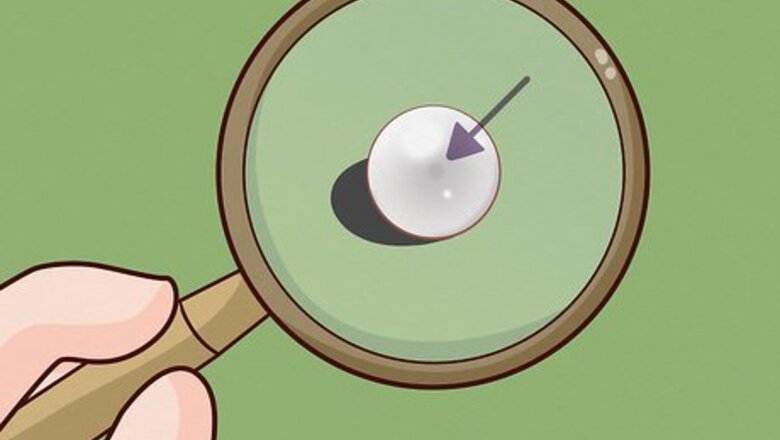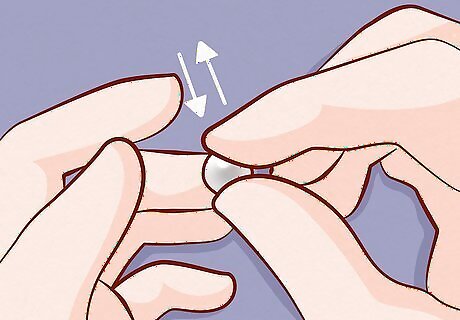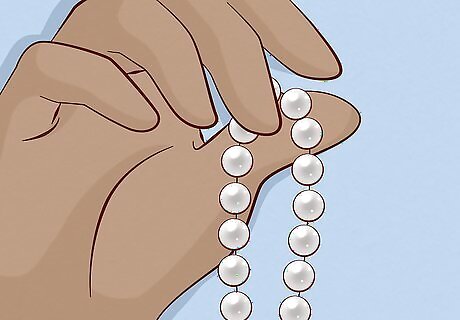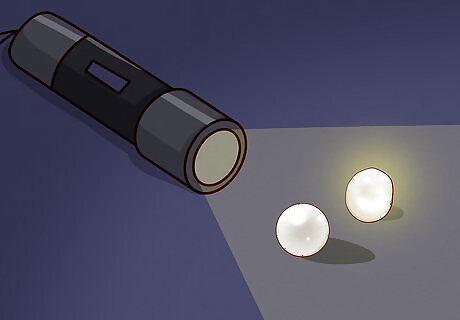
views
Identifying Pearls by the Look

Look for rings around the drill hole. A fake pearl will not have any rings or ridges around a drill hole. Put the pearls under a light and use a magnifying glass to inspect the drill hole. If the holes are smooth, then the pearls are likely fake.

Examine for variations in size and color. A string of fake pearls is usually uniform in color and size. Real pearls are formed by nature, so there will be differences in each pearl. Look at the pearls for variation in and size and color. The differences may not be dramatic, but they should ne noticeable.

Notice the shape of the pearl. A perfectly round pearl is very rare and will sell at a very high price. A typical pearl may still be real, but it won’t be perfectly round. It may be shaped like an oval, or there may be a bump in an otherwise round pearl. A string of pearls is likely fake if every pearl appears like a tiny ball.
Examining Pearls by Feel

Hold the pearls in your hand. Depending on the type of vintage jewelry, you may not be able to hold the pearls alone. One thing you can do to determine if a pearl is real or fake is to detect the weight. A set of real pearls should feel hefty in your hand. A set of fake pearls will feel quite light.

Rub your fingers over the pearls. Along with deviations in size and shape, real pearls will have texture. Fake pearls will feel perfectly smooth when rubbed between your fingers. Real pearls will have small bumps and imperfections.

Feel the pearls texture with your teeth. An easy and old method to identify a real pearl is to use the “tooth-test.” Put the pearls up against your mouth and rub the pearls over the bottom edge of your tooth. A real pearl will have a light grit to it. A pearl made of plastic or glass will feel smooth. A fake pearl will feel similar to the feeling of rubbing polished nails across your teeth.

Feel for a sense of coolness. No matter the temperature, a set of real pearls will have a coolness to them. They may not necessarily feel cold, but they should feel cool. A set of fake pearls will have a sticky feeling when you roll them around in your hand.
Using Tools to Identify Pearls

Shine a light on the pearl. Real pearls have depth and luster. Fake pearls do not reflect light as well. The fake pearls may look shiny, but they will appear shallow. Take the pearls to a well-lit room or shine a flashlight on them. They are most likely real if they reflect the light well.

Look for onion-skin-type layers. A real pearl has onion-skin-type layers inside of it. If the pearl has a hole from where it has been drilled, use a flashlight and 10x loupe and shine it inside of the hole. Look for the layers. If it is fake, there won’t be any layers at all. You can also use a regular magnifying glass.

Have the pearls x-rayed. If you’re having trouble identifying the pearls on your own, a sure way to identify them is to have them x-rayed. An x-ray will show if the pearls has the onion-like layers that it should have. Although it may be a strange request, you can ask your personal physician, veterinarian, or dentist to do the x-ray for a fee. The x-ray will also identify if the pearl is natural or cultured. A an x-ray will reveal a bead inside of a coating.




















Comments
0 comment